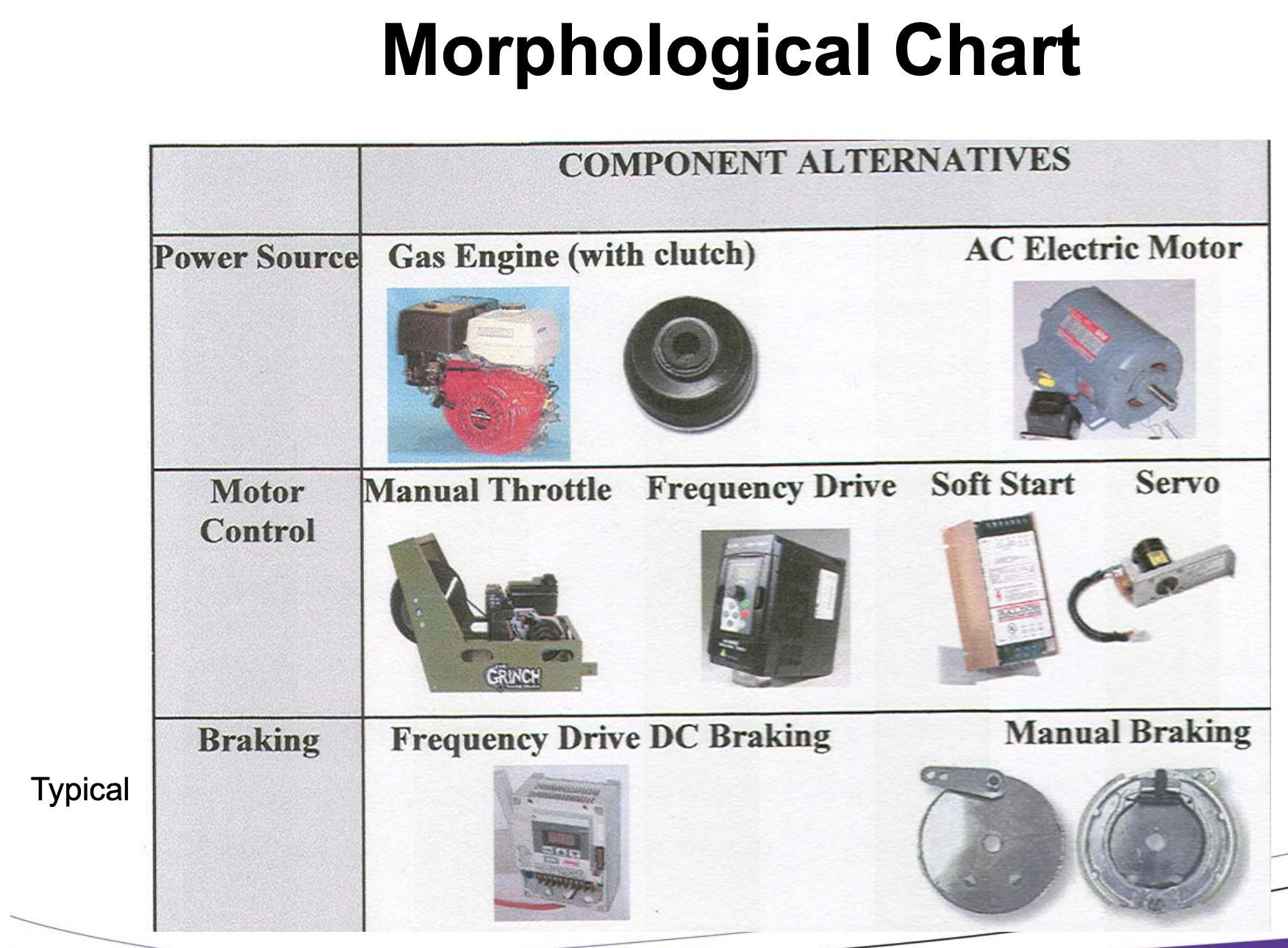Usually when a problem is formed you can almost always come up with a solution, but, this solution may not be innovative or the optimal solution.
Once conceived, the initial solution causes design fixation and prevents the consideration of other designs. I.E you get locked into something too early which could hamper innovation.
Methods for Concept Generation
- Brain Storming
- Each group member generates 5 or so solutions and then you filter through them
- Technology Search
- Look for physical principles and effects in various technological domains within the problem
- Conceptual Difference
- Conceptually, what are the different ways you can approach this problem (solutions across different domains)
- Ideas and concepts are different when
- The underlying scientific principle or governing effect is different
- The concepts do not share the same critical solution-based design parameter
- Funnelling of Concept Solutions
- Need analysis → concept generation → concept evaluation → configuration development → final design
- We want a large potential for innovation over how ever much development time there is
Morphological Chart
- Presents several conceptual designs for different sub-functions or components for the design
- These can be combined into a complete design
- You kind of make a matrix of different sub-functions vs alternatives where each grid is a concept and you list the alternatives in this matrix
- Basically, each possible combination of alternate concepts can be combined into a new solution (one choice from each sub-function)
- From these solutions, you can predict / estimate each alternative’s performance
- Calculations (quantitatively)
- Proof of concepts
- System tests

Decision Matrix
Once you have a few alternatives, you use a decision matrix to select the final design.
Steps:
- Rank criteria (not too many)
- Assign weighting factors
- Form decision matrix (up to 5 alternatives)
- Rate the decisions (up to 5 alternatives)
- Select the final design
Here, less is more, don’t make it too complicated
Rank Criteria
- Kind of arbitrary based on perceived importance for each criteria
Criteria Weightings
- Choose weighting for your criteria (this can go up to 100?)
- This is based off of your criteria rankings (highest importance has the highest weight)
Form Decision Matrix
- Just create the table
Rate the Alternative Designs
- Rate each design from 1-10 and justify your decision
- Multiply your ranking by the weight for your final score for a criteria
Select Final Design
- Add all scores for a given design
- Select design with highest score
Realness
Real shit, this is just a way to quantitatively justify the design you choose, there are some things that are purely qualitative that you like about a design that are hard to quantify, kind of like drafting players.